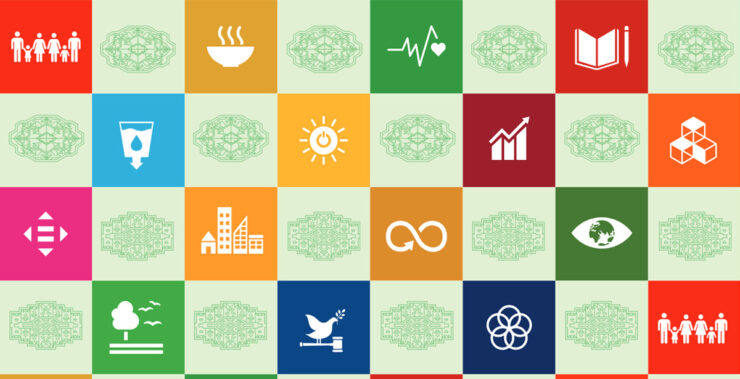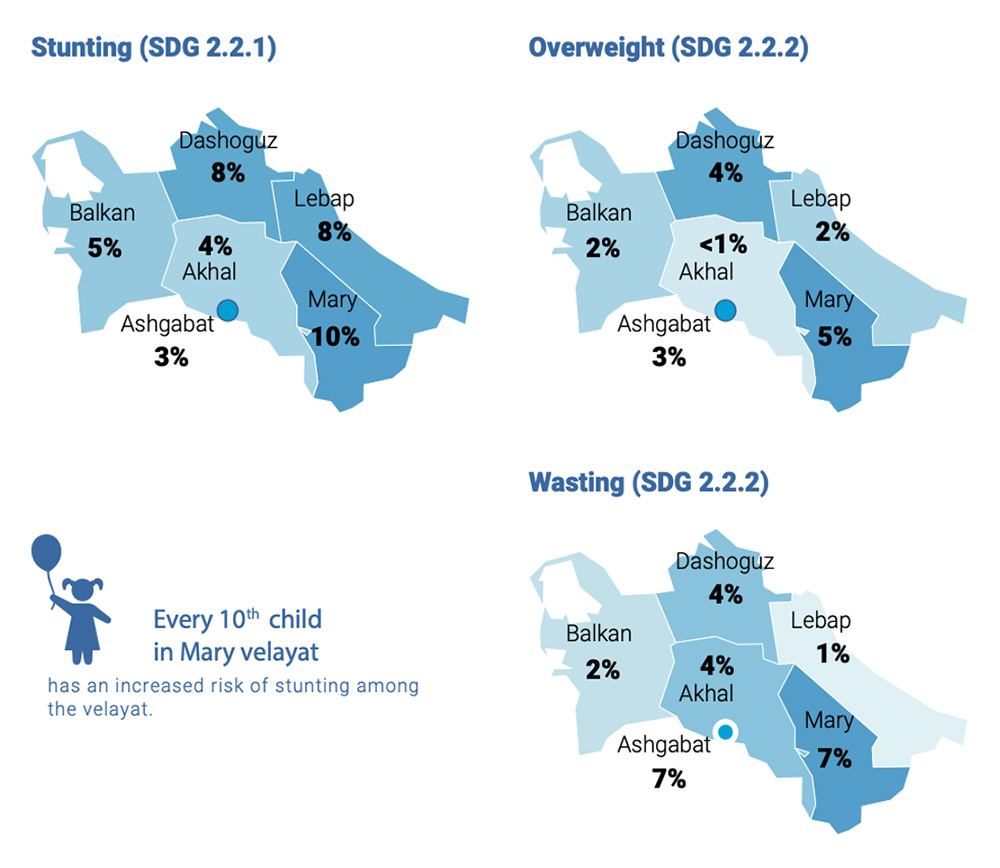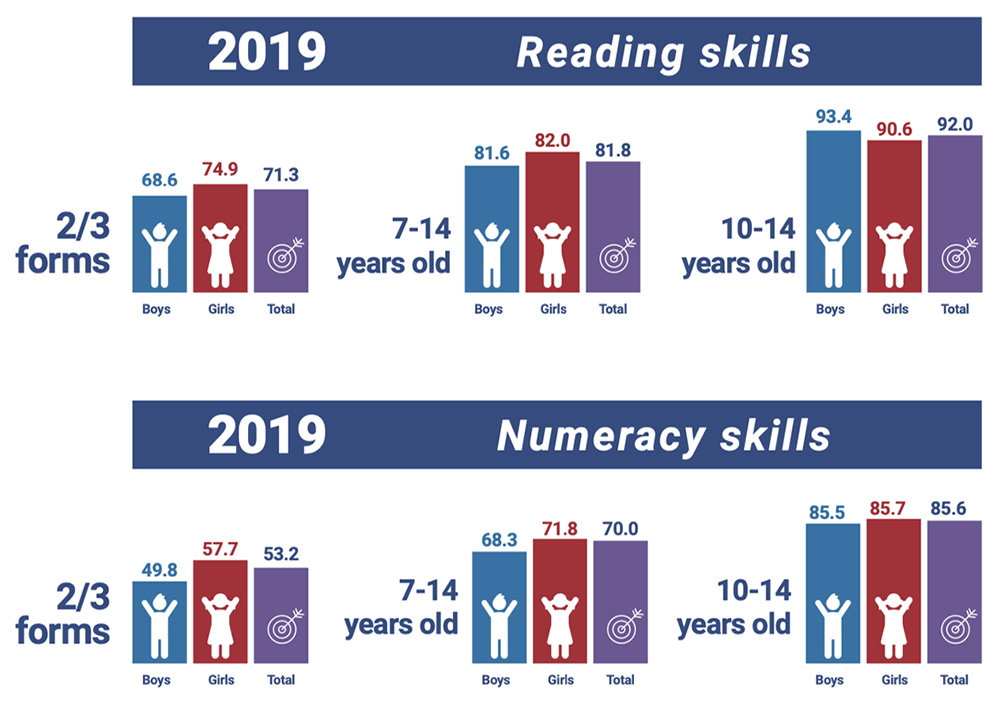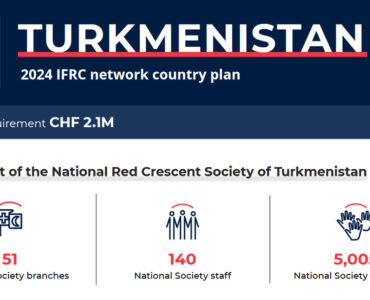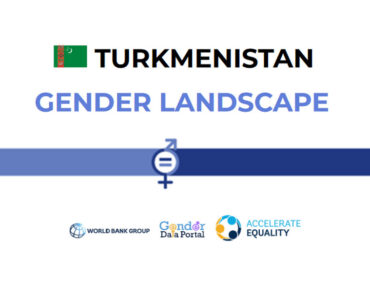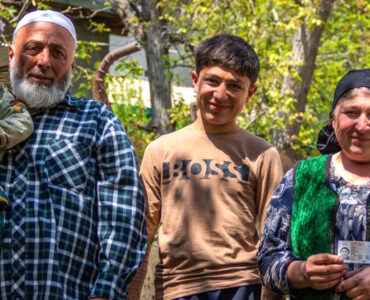In its second Voluntary National Review (2023) the government of Turkmenistan reported its progress on implementation of 11 out of 17 Sustainable Development Goals (SDGs). The 2030 Agenda for Sustainable Development encourages member states to “conduct regular and inclusive reviews of progress at the national and sub-national levels, which are country-led and country-driven”. The VNR serves as a basis for the regular reviews by the high-level political forum which are voluntary and state-led under the auspices of ECOSOC. To coordinate activities and draft the country’s VNR the Turkmen government set up a Working Group under the Ministry of Finance and Economy. The main source of data was the SDG database of the State Statistics Committee of Turkmenistan.
VNRs from 2019 and 2022 focused on specific SDGs, but neither reported on all SDGs. For example, VNR 2019 focused on 7 SDGs while the 2022 report addressed 11 SDGs. In its 2022 report the government added SDG 1 “End poverty” and SDG 5 “Achieve gender equality” upon the recommendation of the UN Resident Coordinator’s Office in Turkmenistan. It seems that the government of Turkmenistan focuses on specific SDGs where the country has achieved some success.
According to the review, the government of Turkmenistan claims to have a “human-centered” approach to sustainable development “with a focus on the individual and improving the well-being of every citizen of the country”. The data provided by the government illustrate that not every person in Turkmenistan enjoys their basic social, economic and political rights and that the government of Turkmenistan has serious work ahead before it can ensure the well-being of every citizen.
Below are a few data points related (directly or indirectly) to people’s wellbeing in areas such as education, health, social and economic spheres in Turkmenistan:
- Turkmen households spend 52.9% of their total expenditures on food.
- More than half of the country’s population does not have access to the Internet while only 37.2% of schools have internet access for educational purposes.
- Over the past 55 years the average air temperature in Turkmenistan increased by 1.4°C compared to the global average of0.8°C over the past 100 years.
- The share of foreign direct investments in the GDP of Turkmenistan decreased from 9.2% in 2015 to 2.1% in 2021.
The state of citizens with disabilities:
- 135.9 thousand people are recipients of state disability benefits as of 1 January 2023.
- 8% of adult respondents and 26% of children with disabilities experienced problems with getting an education while 6% of adults and 8% of children experienced isolation from society.
- Only 0.9% of schools had adapted infrastructure and materials for students with disabilities.
The state of children:
- 7.1% of children are with stunting and 2.4% with severe stunting.
- The biggest stunting is observed among children aged 18–23 months (15.3%).
- Stunting in rural areas is 7.9% and in urban settlements is 5.8%.
- 4.1% of children under the age of five experience low body weight due to poor nutrition and 0.6% of children struggle with obesity.
- Reading skills of children of 2-3rd forms are 71.3% and numeracy skills were 53.2% with significant differences between girls and boys.
- 77% of children aged 3-5 years in Ashgabat attend a pre-school education program compared to 65% in cities, and 26% in villages.
Figure 1. Prevalence of stunting, wasting and overweight in the regions of Turkmenistan, %.
Source: Voluntary National Review of Turkmenistan, 2023.
Figure 2. Reading and numeracy skills of children in Turkmenistan, %.
Source: Voluntary National Review of Turkmenistan, 2023.
The state of women and girls:
- Only 31.4% of girls aged 1-14 years were brought up with nonviolent parenting methods.
- There are 22.9 births per 1,000 women ages 15-19.
- Girls make up 65.7% of the students in vocational schools and 42.5% in universities.
- 0.2% of women aged 20-24 entered into a marriage before they reached the age 15 and 6.1% did so before reaching the age 18.
- 12% of women 18-59 years who have ever been married/in a relationship have experienced physical and/or sexual violence by their partner at least once in their life while 5.4% experienced it over the past 12 months.
- 42.2% of women aged 15-49 years independently make informed decisions about sexual relations, the use of contraceptives and seeking reproductive health services.
- 79.6% of women of reproductive age (15-49 years) have their family planning needs met by modern methods.
- Women account for 25.7% of the national Parliament, 21.7% of local representative bodies (Halk Maslahaty), 22.4% in senior positions, 32.5% of entrepreneurs and 42.5% of the employees of large and medium-sized enterprises.
- Only ⅓ of the secondary school teachers and less than 5% of pre-primary teachers are men.
- 1 in 5 entrepreneurs who received land for the production of agricultural products were women.

